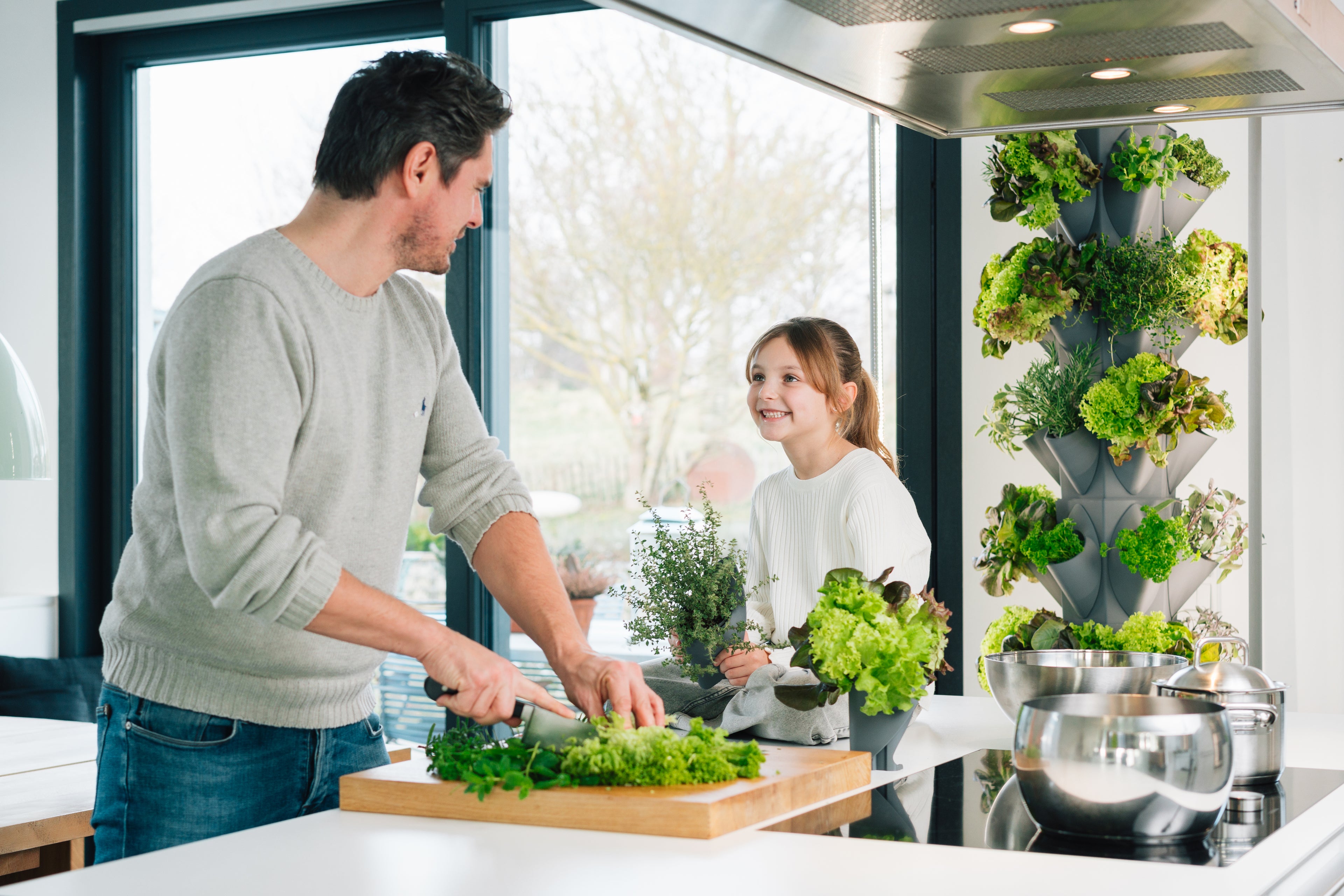
Indoor garden: trends, developments – this is how it works
02/15/2024 - Pia from greeny+
Are you longing for a connection to nature in your living space without having enough space for a traditional garden? Don't worry, because here comes the solution: indoor gardens! Regardless of whether you choose a conventional indoor garden or the smart solution, this article will guide you through the functions, differences, advantages and tips to get started with your own green oasis .
-
The essentials in brief:
- An indoor garden brings the freshness of nature directly into your home, whether you live in an apartment or a house. Imagine how beautiful it would be to be surrounded by vibrant green plants every day!
- Whether you're a pro or just starting out, this vibrant element can brighten your home, provide you with fresh food, and maybe even spark your interest in natural beauty and home growing.
- From compact entry-level models to advanced smart gardens, the variety of products offers a suitable option for every individual need.
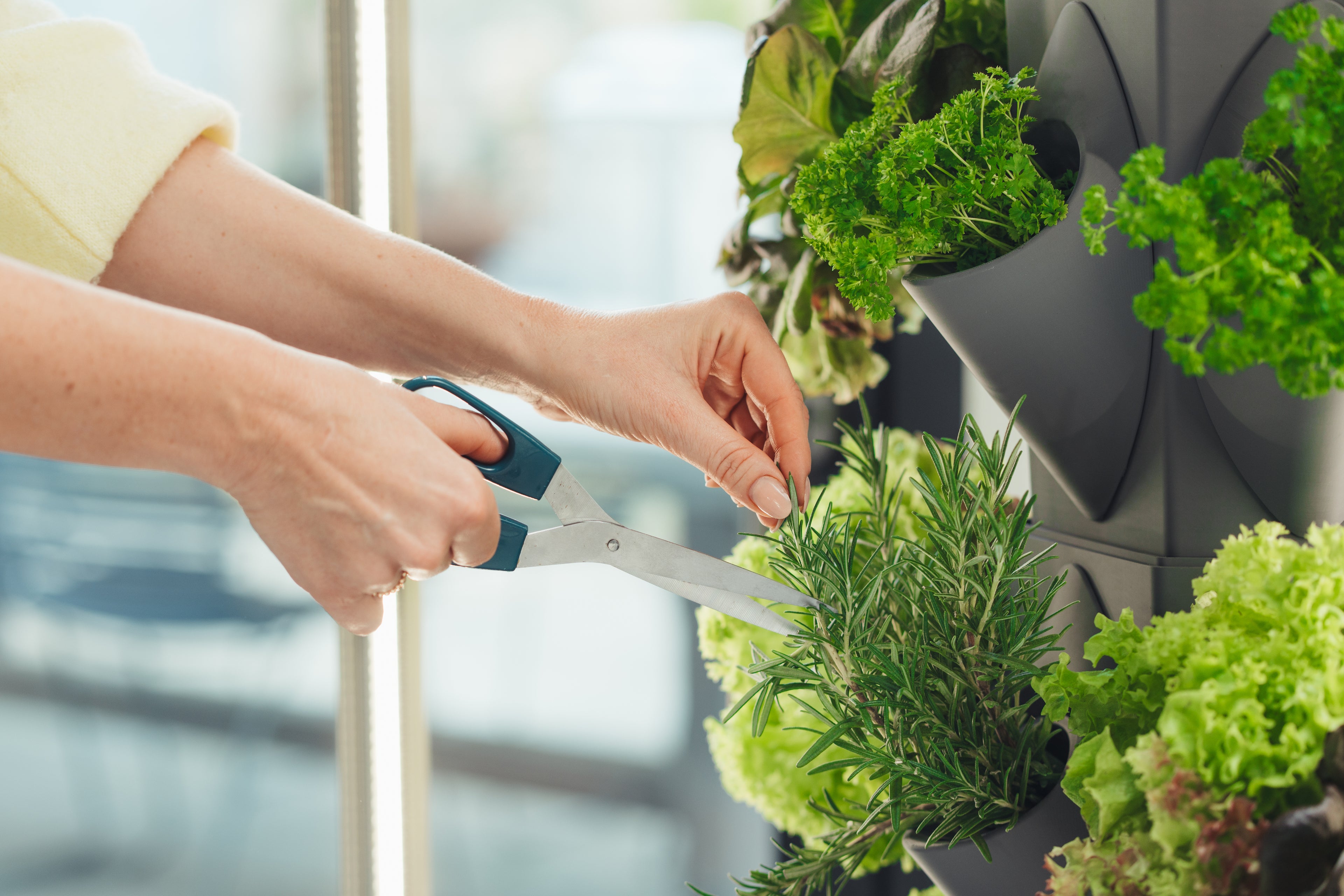
What is an indoor garden?
Imagine looking out into your own intelligently designed garden and enjoying the beauty and aroma of your favorite herbs, vegetables, fruits or ornate flowers. All of this is possible with your own indoor garden! An indoor garden is a small ecosystem of its own that makes it possible to grow and care for plants indoors , such as in homes or offices. It is a piece of green paradise that can be used all year round , regardless of external environmental influences.
Innovation in this area has revolutionized the very concept of gardening, making it easier and more stylish than ever to have fresh, healthy and delicious plants on hand . The range of indoor gardens is broad and ranges from simple herb pots on the windowsill to complex systems (English: “smart garden”) . The selection of plants for an indoor garden is diverse and offers something for every taste.
Indoor gardens offer numerous benefits, including the ability to grow fresh produce year-round , bring the beauty of nature indoors , and even improve air quality . They are ideal for people with limited space or for those who live in urban environments where access to gardens may be limited.
What types of indoor gardens are there?
Depending on your preferences, available space, and level of experience, there are a variety of indoor garden types to choose from. Here are five common types:
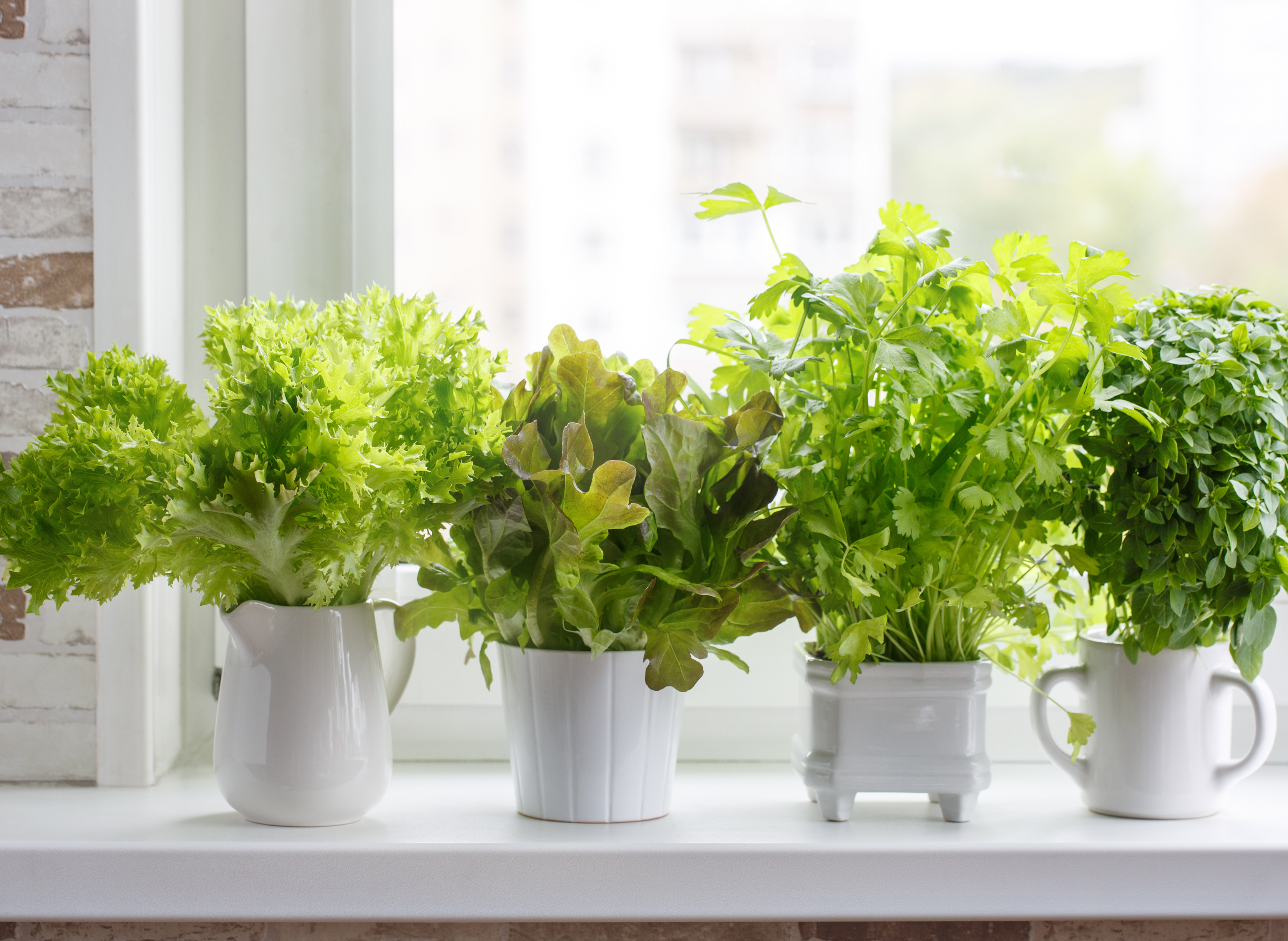
Smaller plant arrangements: These often include small pots or containers that are placed on windowsills, tables, or shelves. They are good for beginners and those with limited space.
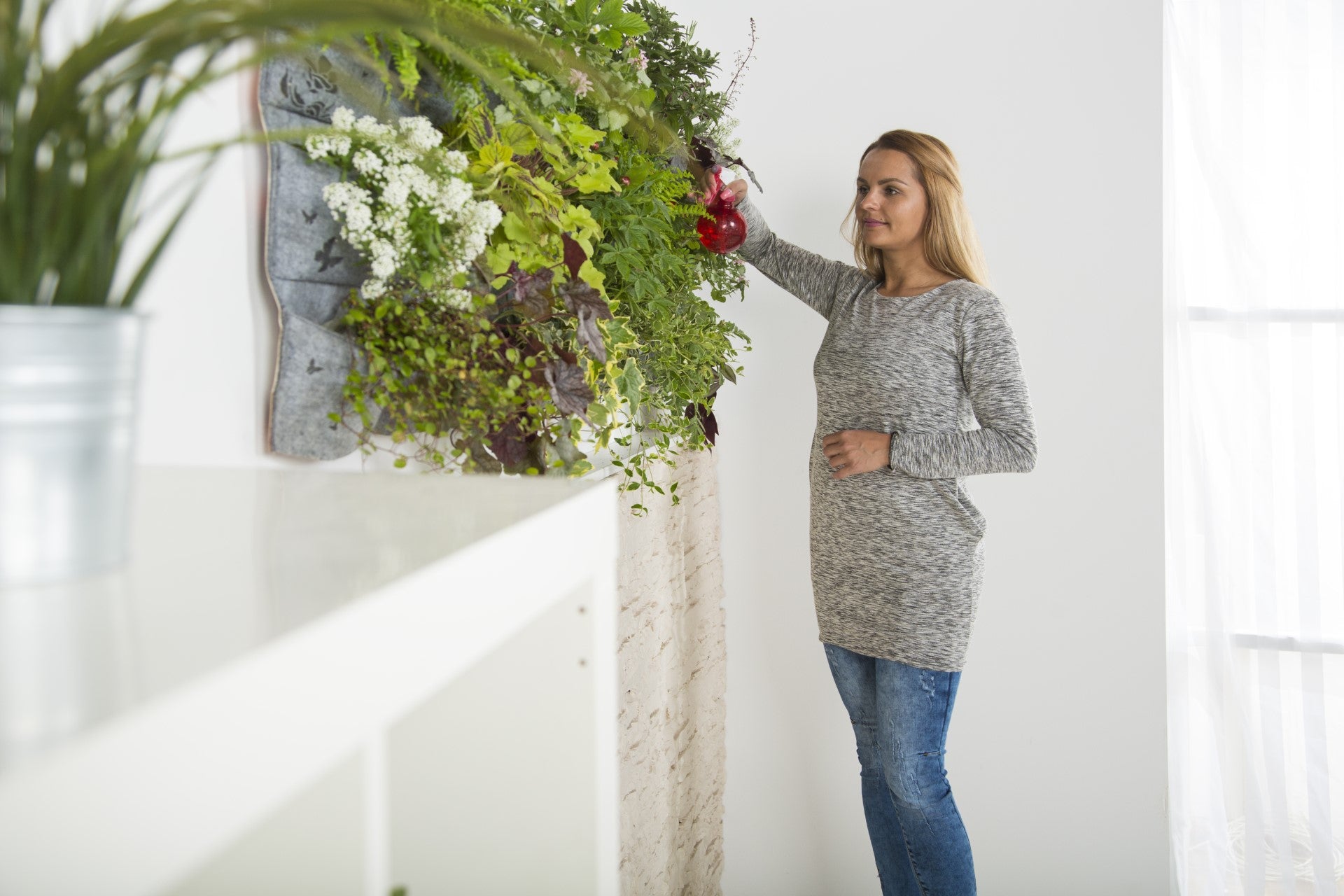
Vertical Gardens: Vertical gardens maximize the use of vertical space by cultivating plants along walls or special vertical structures . They save space and can have an impressive visual impact.
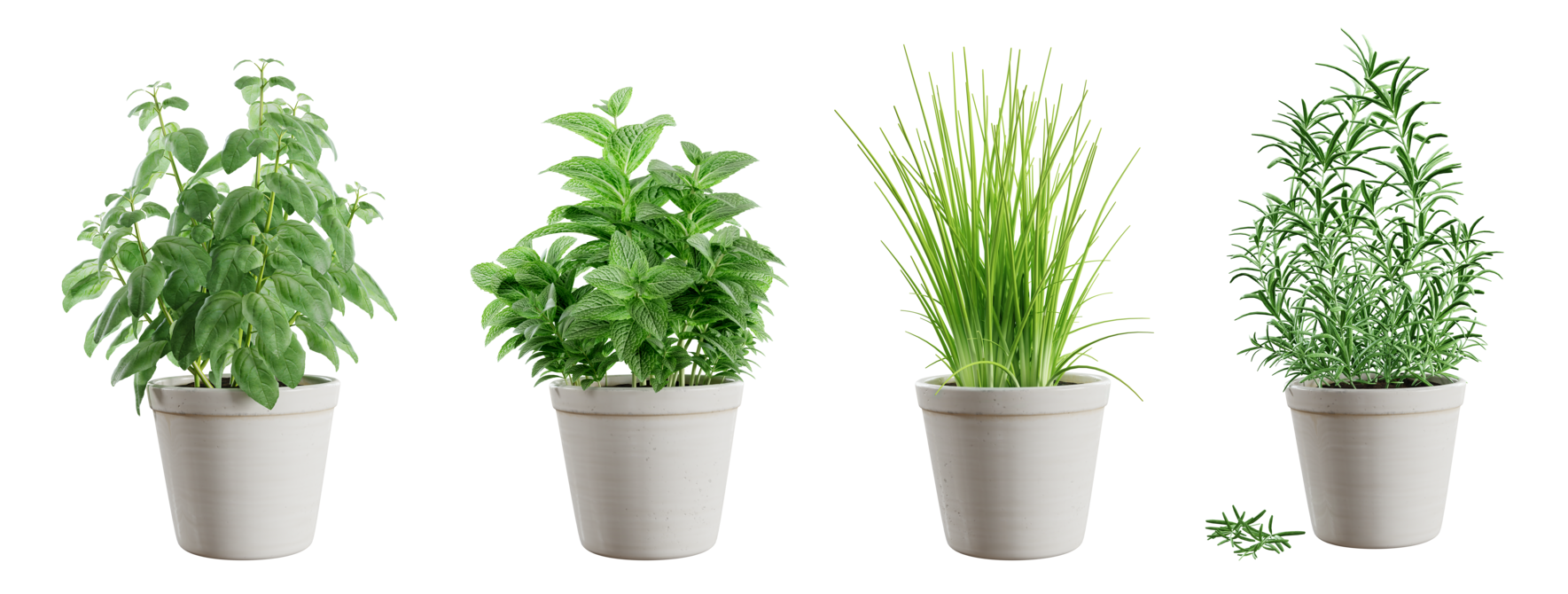
Herb Garden Kits: Pre-made kits that contain everything you need to start a small herb garden in your own home . They are easy to use and work well for kitchen windows or countertops.

Terrariums: Terrariums are closed or semi-closed glass containers that create a moist environment for plants. They are particularly suitable for plants that require high humidity, such as ferns and mosses.

Aeroponic Systems: Aeroponic indoor gardens use water instead of soil to cultivate plants. These systems are often automated and offer precise control over nutrients and irrigation, such as the greenyGARDEN HOME . This device offers an all-in-one solution and automatically creates the ideal growing conditions for your plants.
Difference between indoor garden and (smart) indoor garden
-
An indoor garden generally refers to any type of garden that is operated indoors . A traditional indoor garden allows you to grow plants similar to outdoors, but in a controlled indoor space . You select suitable plants, adjust the container and substrate, ensure adequate lighting, regular watering and sufficient care.
A smart indoor garden goes one step further by integrating technology to streamline the growing process and simplify the maintenance process . This includes sensors that monitor soil moisture levels, humidity and light intensity.
Automatic irrigation systems control watering based on measured conditions, while programmable lighting systems mimic the natural light cycle or adjust the light spectrum to promote plant growth. Additionally, remote monitoring and control via a smartphone app or other devices often allows users to control their smart indoor garden from anywhere.So, the main difference lies in the technology and automation that is integrated into a smart indoor garden to make the process of indoor gardening more efficient and user-friendly.
Your decision for the right system depends entirely on your own preferences and priorities! The possibilities are limitless.
Advantages of a (Smart) Indoor Garden
Modern lifestyles and limited outdoor space make the indoor garden an increasingly attractive option for plant lovers. The advantages of this are clearly visible. Five key reasons are explained in more detail below:
Collapsible content
Efficient and space-saving
The selection ranges from vertical gardens to compact shelving systems. There is a suitable solution for every room without taking up valuable floor space.
Year-round harvest
Enables a year-round harvest - the continuous production of fresh herbs, vegetables and fruits , regardless of external weather conditions.
Air purification and well-being
Plants purify the air naturally and contribute to your well-being at home.
For beginners and professionals
With its easy operation, an indoor garden offers something for everyone . There are a variety of plants that are easy to care for and perfect for beginners, as well as more challenging types for experienced gardeners. Many indoor gardens also provide lighting or even irrigation fully automatically.
You are what you eat!
Decide for yourself what ends up on your plate! With an indoor garden you can grow 100% natural produce, free of GMOs and pesticides, for a taste you'll love.
Choosing the right plants for your (smart) indoor garden
Before you venture into the world of indoor gardens, it is crucial to choose the right plants. Make sure the plants you choose match your system's growing method and the lighting conditions in your space . Some plants do better in direct sunlight, while others can do with less light.
You can express your creative side and sow your own seeds for surprising and exciting results. It's best to try out different types of plants and see for yourself which ones develop best in your particular environment. Who knows, you might even discover a new favorite plant!
With an indoor garden, the choice of plants is as diverse as your imagination. And the best part? Everything grows fresh, natural and free of harmful substances, right in your home!
To enable you to quickly get used to your system and still achieve initial success quickly, start with the following plants:
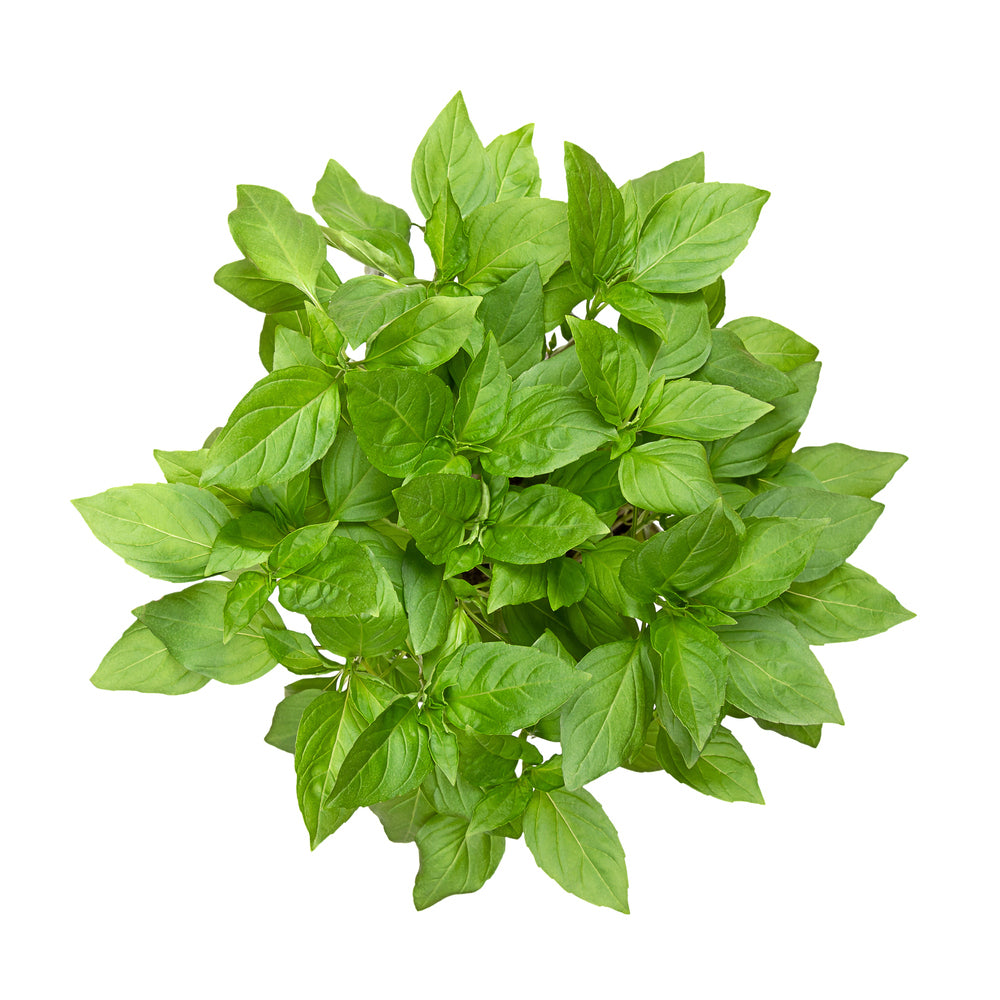
Herbs:
They are an excellent starting option. Classic favorites like basil or more exotic varieties like Thai basil and lemon balm thrive in indoor gardens.
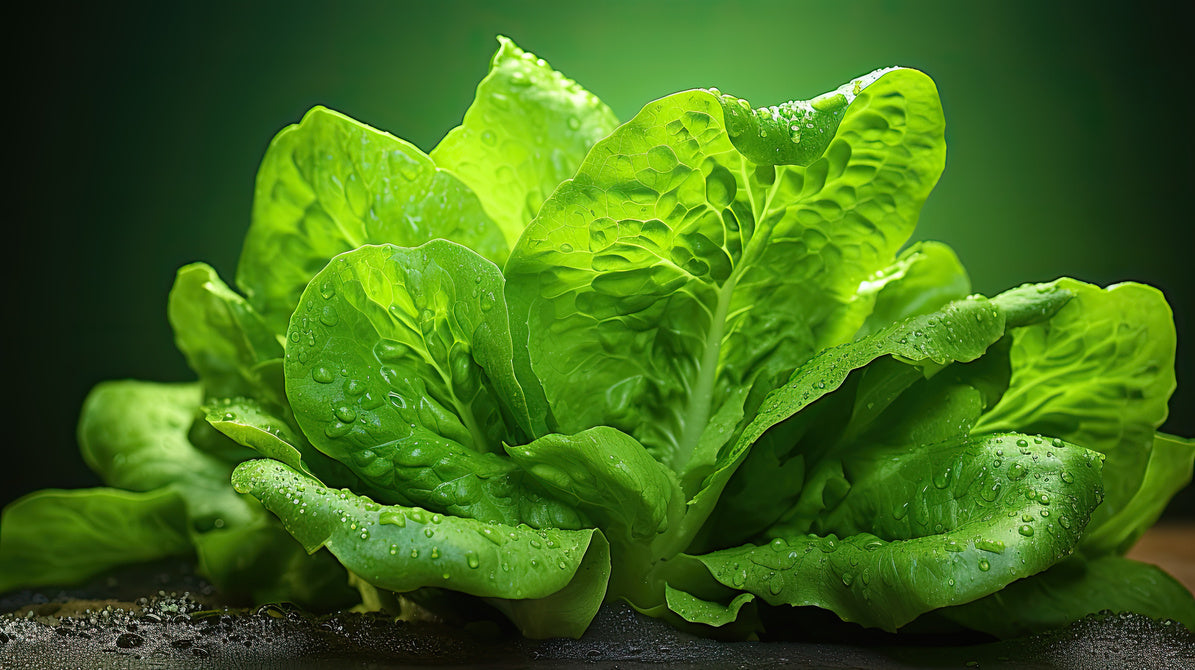
Salads and leafy vegetables:
Like arugula, bok choy and kale . These plants are fresh, healthy and fast growing.
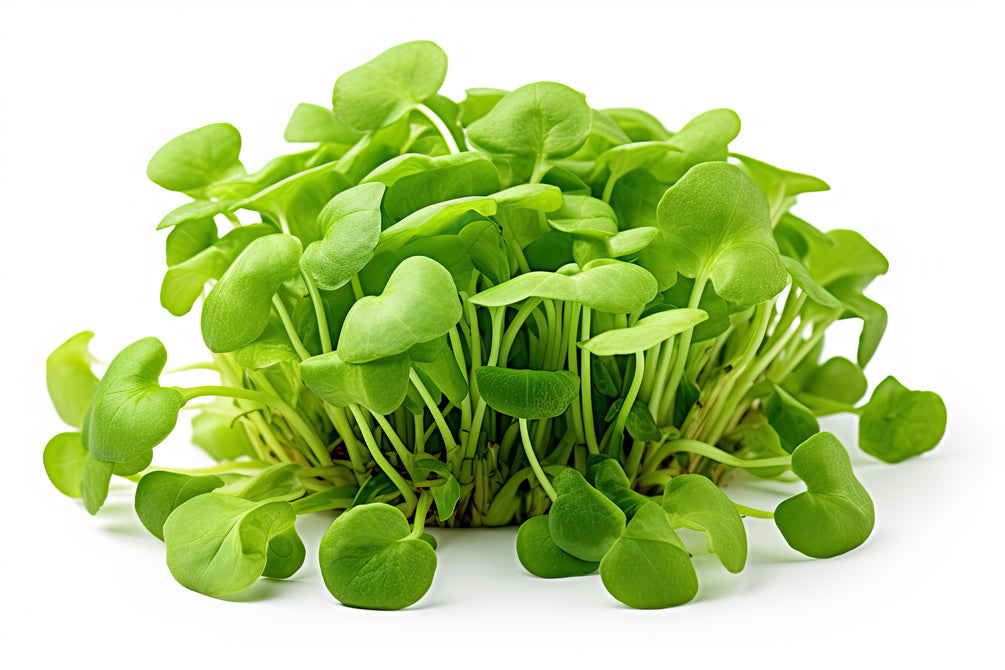
Microgreens:
Varieties like broccoli, radishes and peas are true vitamin powerhouses and grow quickly in an indoor garden.

Chili:
Lovers of spicy flavors can enjoy growing this.

Not just for decoration:
Marigolds are not only beautiful, but can also be used as a tea to treat inflammation of the mouth and throat.
Tips for a successful (smart) indoor garden
Building an indoor garden goes beyond simply improving the indoor climate - it creates an inviting atmosphere and has been proven to increase general well-being. If you have the dream of creating a green oasis in your home, the following five tips will give you the necessary guidelines.
-
Choosing the optimal planter
Choosing the right planter plays a crucial role in the growth and development of your plants. For a DIY project, make sure that the vessels have sufficient drainage holes to avoid waterlogging. -
The right care
An indoor garden requires regular maintenance. Make sure you research your plants' specific needs, including water needs, preferred temperature, and fertilizers. Finding the right balance of care is crucial , as both too much and too little care can affect the growth of your plants. So find a balance to keep your green roommates healthy and happy or use a smart solution to help you care for your plants. -
Keep an eye on location and lighting conditions
One of the crucial aspects when it comes to a successful indoor garden is the right location, because light is a crucial factor for plants to thrive . Indoor plants need enough light to carry out photosynthesis. Place your plants near windows to take advantage of natural daylight. If natural light is limited, you could also consider using a plant lamp to create optimal lighting conditions. Smart indoor gardens even offer automatic light control using LED lamps to ensure that your plants are adequately lit. -
Watering and humidity
The irrigation system of your indoor garden is another crucial aspect of effective gardening. Smart indoor gardens offer the option of automatic plant watering, and their tank capacity determines how many plants you can grow and how long you can be away before needing to refill the tanks. If you do not use an irrigation system, it is necessary to water regularly by hand and ensure that your plants are not exposed to dry periods .
Most houseplants prefer higher humidity . However, in heated rooms the air can often be too dry, which can affect the well-being of your plants. Regularly spray water over the leaves or place water bowls near your plants to increase the humidity. This creates an environment in which your plants feel comfortable and can thrive optimally. A smart indoor garden with integrated sensors and automated irrigation systems can help keep humidity at a constant level.
Finally, and this is probably the most important part, pour your love and passion into your garden . A green thumb doesn't come from anywhere - it's cultivated through time, effort and dedication. The more you get involved with your garden and get to know the needs of each plant, the better your success will be!
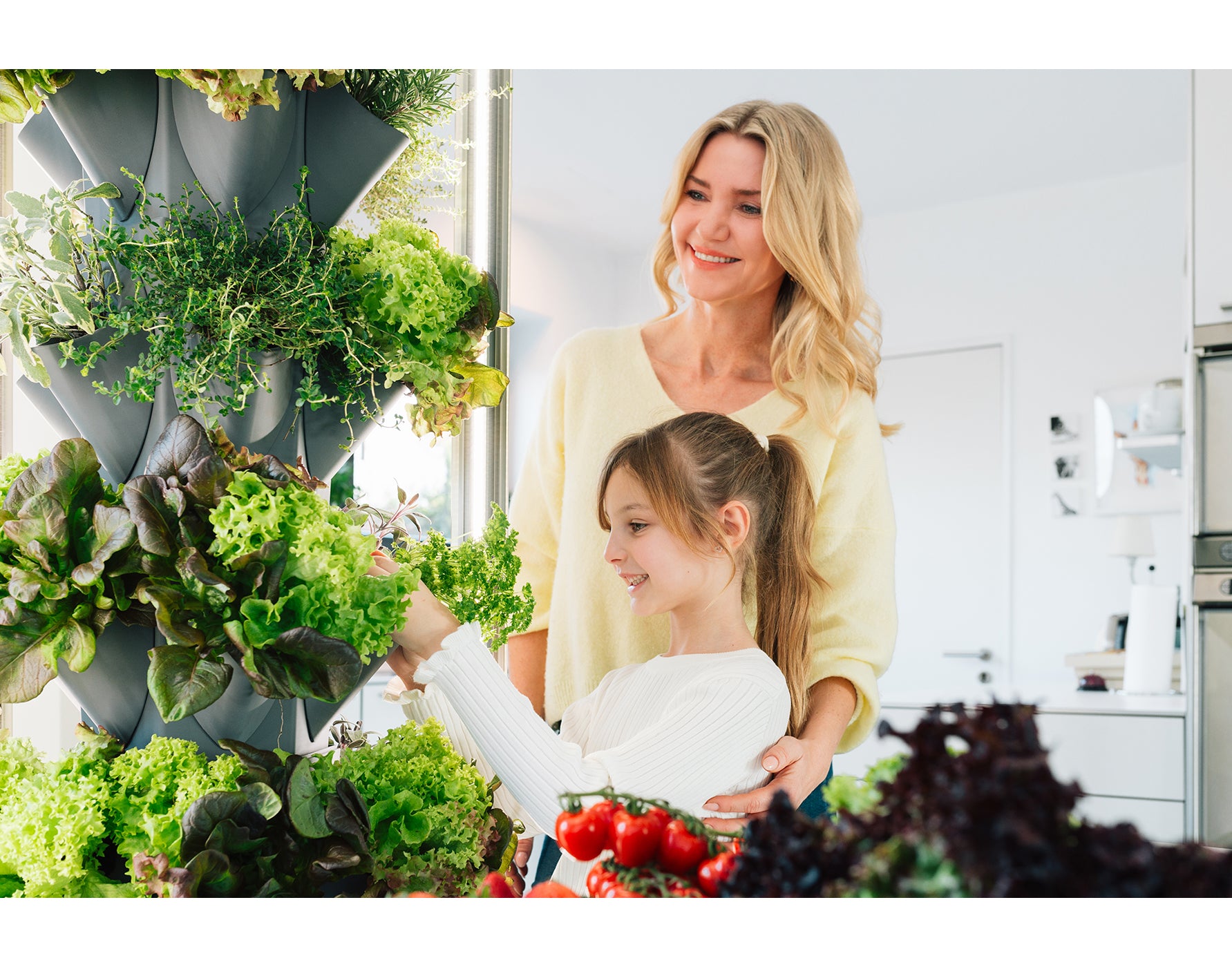
Your own green paradise in the indoor garden
Indoor gardening is not just a simple matter of growing plants , but a fascinating experience that creates a green oasis in your own home. An indoor garden combines the practicality of cultivation with the visual enjoyment of green within your own four walls. Not only does it enable you to supply yourself with fresh greens, but it can also bring a wealth of vitamins into your daily diet . This health aspect gives indoor gardening an extra dimension that goes beyond the aesthetic pleasure of greenery. Part of your kitchen can become a small green oasis, while a smart garden uses innovative technology to make cultivation easier and the green experience even smarter. The result is not only visible greenery, but also the personal joy and experience that comes with indoor gardening.
Also interesting:
View all-
Smart Garden – Die Zukunft mit Hydroponik
Einführung in das Konzept Smart Garden Was ist ein Smart Garden? Ein Smart Garden kombiniert innovative Technologien mit Gartenbau. Das Ziel sind optimale Bedingungen für das Pflanzenwachstum bei automatischer Steuerung....
Smart Garden – Die Zukunft mit Hydroponik
Einführung in das Konzept Smart Garden Was ist ein Smart Garden? Ein Smart Garden kombiniert innovative Technologien mit Gartenbau. Das Ziel sind optimale Bedingungen für das Pflanzenwachstum bei automatischer Steuerung....
-
Hydroponik mit Drip-Systemen einfach erklärt
Du möchtest nachhaltig und effizient gärtnern, aber möglichst wenig Aufwand haben? Dann könnte das hydroponische Drip-System (Tröpfchenbewässerung) genau richtig für dich sein. In diesem Artikel erfährst du mehr übers Drip-System. ...
Hydroponik mit Drip-Systemen einfach erklärt
Du möchtest nachhaltig und effizient gärtnern, aber möglichst wenig Aufwand haben? Dann könnte das hydroponische Drip-System (Tröpfchenbewässerung) genau richtig für dich sein. In diesem Artikel erfährst du mehr übers Drip-System. ...
-
Entdecke das DFT-System (Deep Flow Technique) -...
Was unter der Bezeichnung Hydroponik bekannt ist, eröffnet Dir eine spannende Welt, in der Pflanzen ohne Erde gedeihen – nachhaltig, effizient und platzsparend. Das sogenannte DFT-System (Deep Flow Technique) ist eine...
Entdecke das DFT-System (Deep Flow Technique) -...
Was unter der Bezeichnung Hydroponik bekannt ist, eröffnet Dir eine spannende Welt, in der Pflanzen ohne Erde gedeihen – nachhaltig, effizient und platzsparend. Das sogenannte DFT-System (Deep Flow Technique) ist eine...

